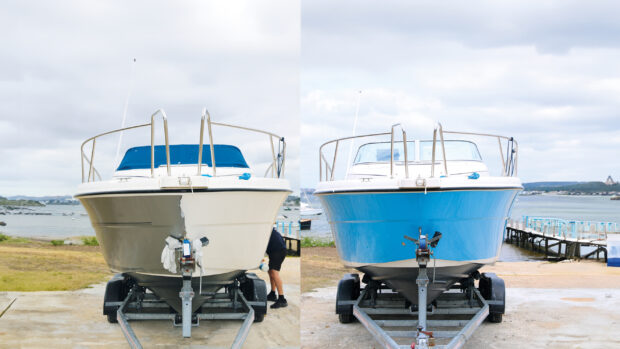Inspired by a 19th century Swedish inventor, Rafnar’s unique arc-of-circle hull forms are truly one of a kind. Dave Marsh reports from Iceland
Scene 1: Rafnar’s Boardroom
As I sat in Rafnar’s boardroom in chilly Reykjavík, studying models of the radical new hull forms that this Icelandic company has developed, I would never have guessed that they were inspired by ground-breaking sailboat designs created by a famous Swedish inventor called Fredrik Ljungström whose innovative work I studied at college 37 years ago.
That’s right, although the two boats I was about to test with the Icelandic coastguard were 40 knot powerboats, their hull forms are inspired by displacement sailboat forms.
The driving force behind these OK Hull designs is Össur Kristinsson, an inspiring gentleman with a passion for boating who seems to have owned nigh on everything from a self-built Canadian canoe to a 40-metre motor yacht.
And although Össur’s designs are very significantly modified adaptations of a simple 19th century idea, he self-effacingly acknowledges his original inspiration in Ljungström.
Fredrik Ljungström designed all manner of things, but among his lesser-known works was his ‘arc-of-circle’ hull shape.
He reasoned, entirely logically, that the more gently you asked the water flowing around a hull to change direction, the less disturbance it would create. Logic again dictated that, straight line aside; the arc of a circle would present the least disruption.
But don’t imagine that this applied simply to the transverse cross sections, these gently curving arcs also ran fore and aft along his boats. That principle, in very simple terms, underpins the thinking behind Rafnar’s new patented hull form.
Faced with various spray rails and knuckles and unusual bow shapes for the eye to contend with on the 10-metre RIB, it’s difficult to distinguish the underlying arc-of-circle form clearly. But it becomes much more evident if you examine the black hull mould from the inside.

Rafnar is not claiming that its hulls are low drag forms offering improved fuel efficiency. Instead, it maintains that its unusual hull shapes slip through the water more comfortably than conventional deep-vee forms, that they remain glued to the water instead of bouncing painfully over the top, and that its hulls are particularly stable and unperturbed under way.
In short, that their rough weather seakeeping is better. And to prove a point, it gave a boat to the Icelandic coastguard (who drove it for 3,000 test miles), before asking us to join the coastguard for a shivery test in January.









